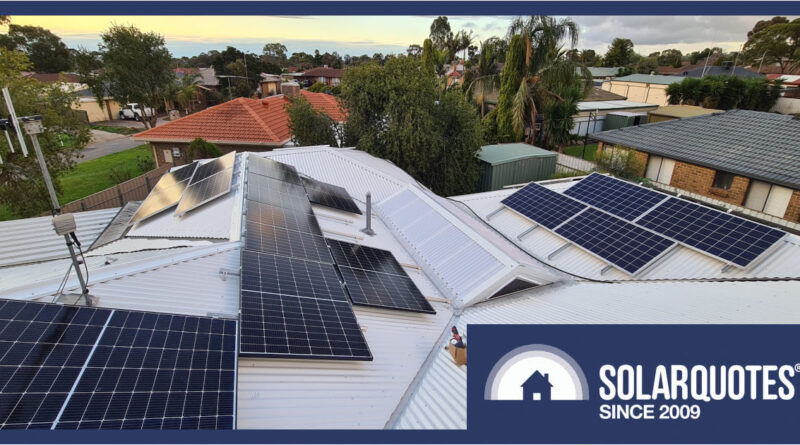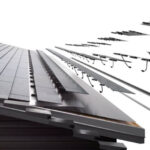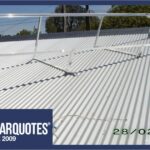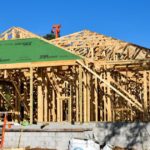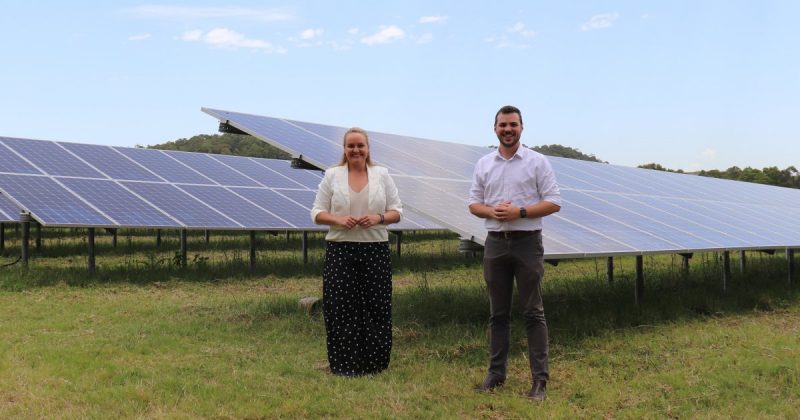Why Builders Get Solar Wrong And How You Can Get It Right
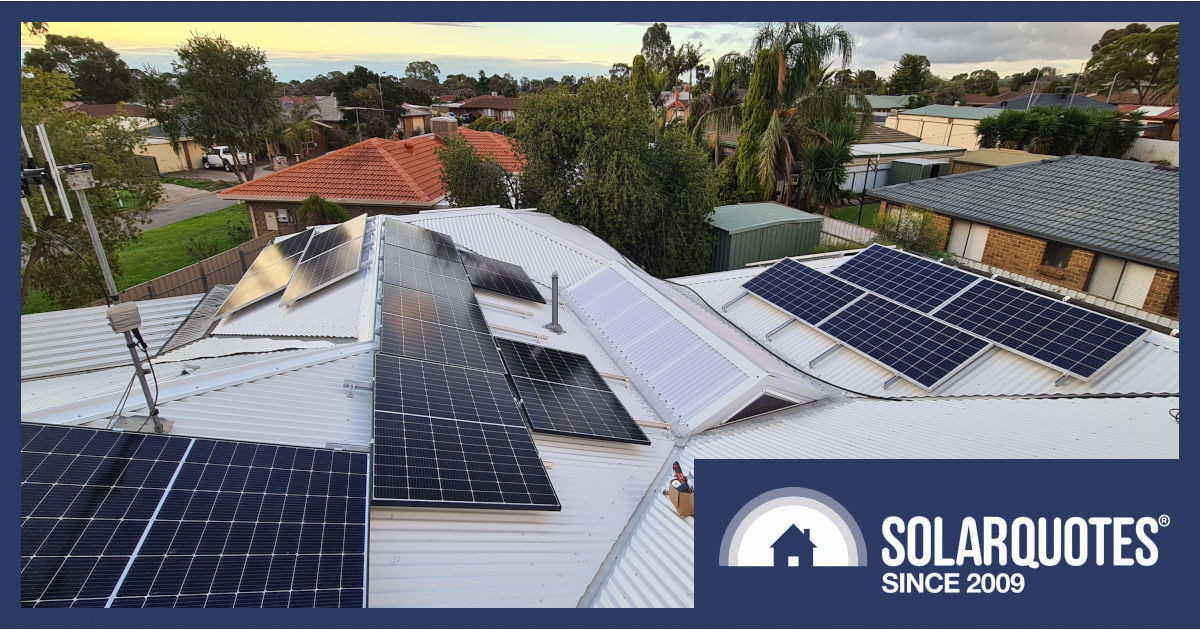
Stink pipes, clear sheets, aerials, low pitch, small planes, a new roof, redeploy old solar panels …and add more capacity. This one had all the complexities.
In this series, I’m pitching a case for better buildings that can make housing more comfortable and more affordable to live in.
A month ago, I explained how Australian houses are badly built, often with outrageously complicated roof lines. Read on as I explore how to get solar panels on your roof efficiently, how to avoid some pitfalls and why it’s so important to enhance your house to use cheap solar energy better.
You Can Fix A Bog Stock House
Perhaps you’re up against a typical project home builder who is hesitant to innovate? Modifying schematics is easy, but changing minds might need more ambition.
Forget about trendy finishes that are impossible to fix later and focus on fundamentals you can do during the build.
I recently reviewed a house plan where the master bedroom’s robe made the roof needlessly complex.
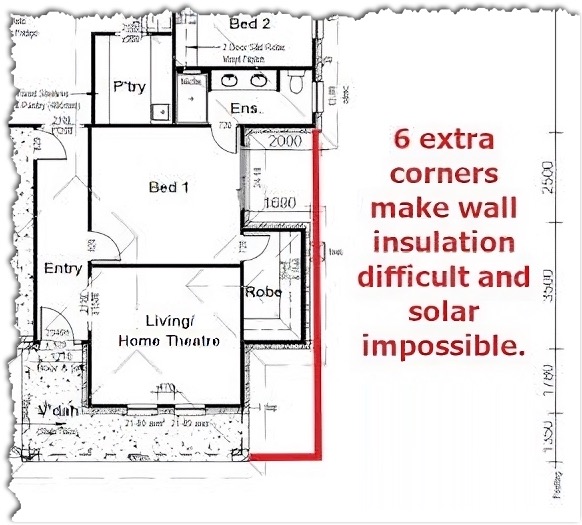
All that complication for zero benefit.
Passive Solar Design Is Not Difficult
Passive solar design makes sure the sun’s rays can reach inside and warm your house in winter, while ensuring they stay outside in summer.
Make your eaves the right size and position the windows correctly. And always remember: builders will always sell you too much glass because it’s cheaper than bricks.
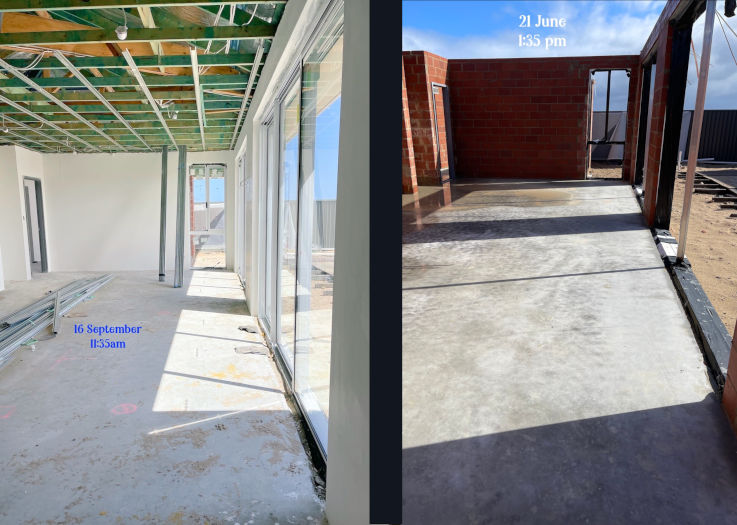
On the left: spring sunshine retreating from the slab. By summer the slab will be shaded by the eaves. On the right, the winter sun’s heat is stored by the slab’s thermal mass. Concrete is a cheap solar battery.
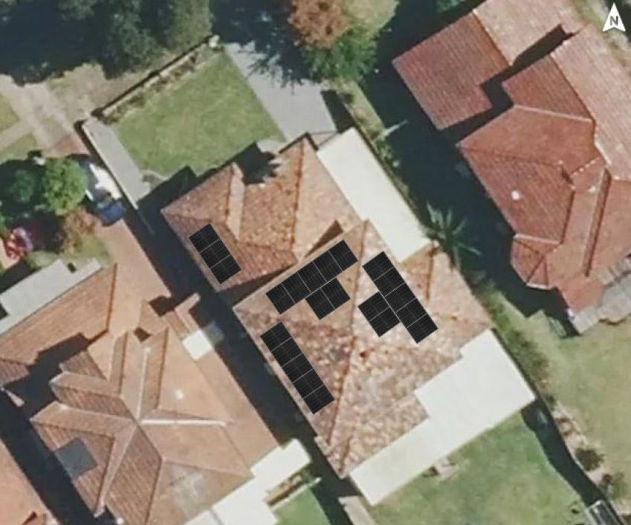
Some stock designs are passable, but the complex architectural marvel (bottom left) is a disaster.
Delete Decorative Dormers
Don’t be tempted to accessorise with Dutch gables and whirly birds.
Insist the builders put your TV aerial on the south edge of the house and that air conditioning units aren’t on the roof either. More importantly, specify that plumbing and vented exhaust fans go out the walls or eaves.
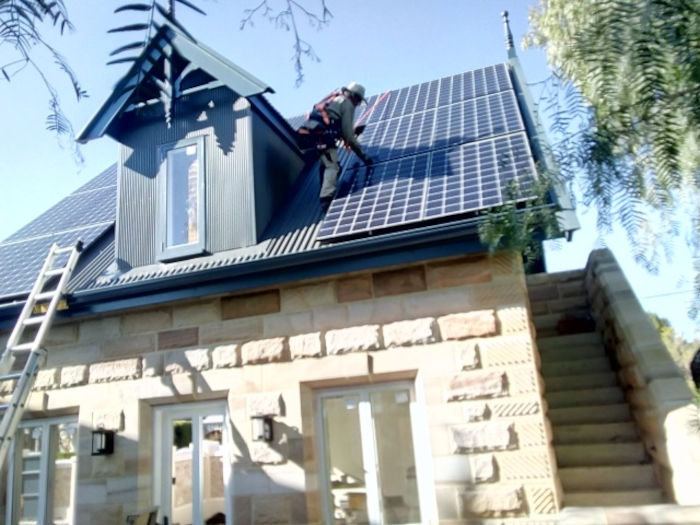
I can almost understand dormers when you’re building a new garage at the heritage-listed Dulwich House, but with hand-hewn stone & solid cedar doors, I suspect the power bill isn’t the most expensive thing here.
Leave The Roof Clear
While Velux skylights and roof windows are stylish, they compromise energy efficiency. They’re hard to insulate, acting as thermal chimneys that can let valuable heat out in winter and let unwanted heat in during summer.
Installing a flat panel LED “electric skylight” saves heat in winter and saves being baked in summer, freeing up the roof for more solar power.
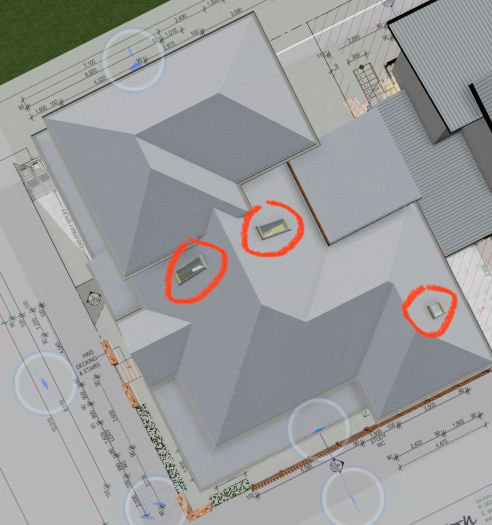
A horrible roof made worse by skylights
Add Extra Purlins
A purlin is a horizontal beam in a roof. They run across the building, supported by sloped rafters or trusses. The rows of screws you see keeping the iron sheets in place are driven into the purlins, hence we have the term “screw lines” showing where these purlins are.
I’ve fixed kilometres of steel purlin. They’re cheaper than aluminium solar rails, and adding one row here or there costs only a few minutes. A correctly spaced roof frame saves wasting a lot of solar racking.
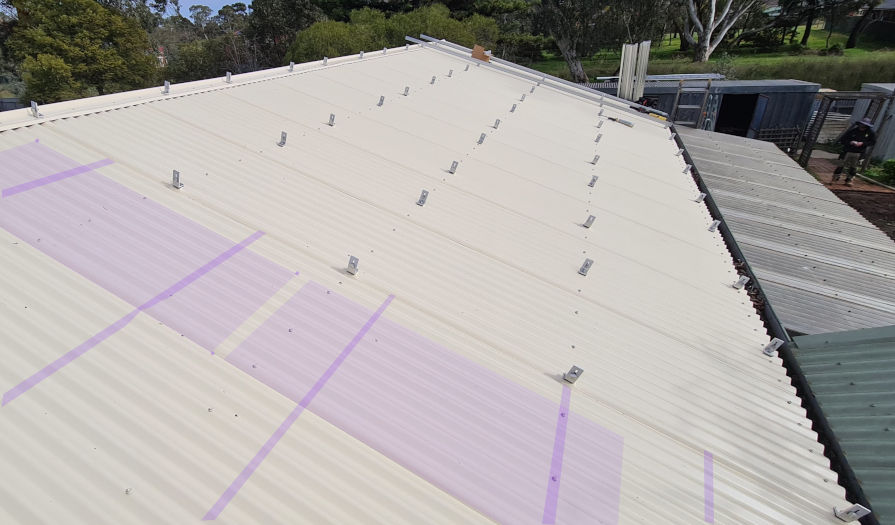
Three purlins won’t support four rails, so this job was laid out with vertical framing/landscape solar panels and used twice as many feet. The purple lines would be ideal purlin spacing for portrait panels and a footway at the bottom. Image credit: Solar Depot
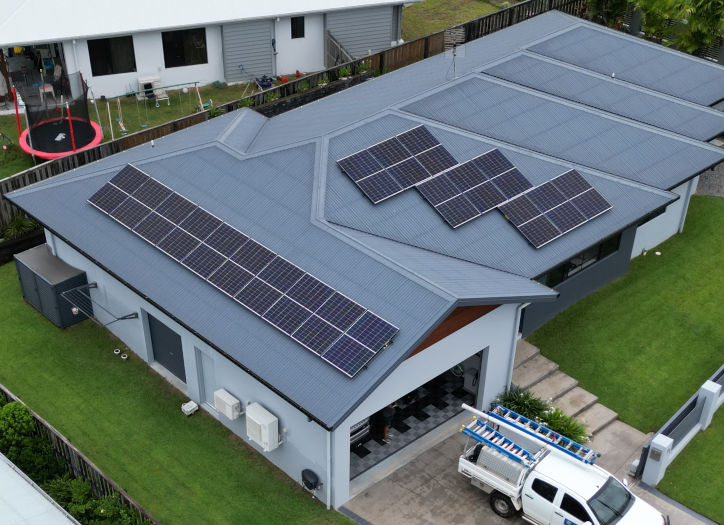
This north Queensland roof has lots purlins and thus screw lines to play with, making solar installation easier despite the complex shape
- Solar modules have specific requirements for mounting called clamp zones.
- The average 1750mm tall panel might allow clamps 200 to 400mm in from the top and bottom.
- Rails must be spaced at a minimum of 950mm and a maximum 1350mm to lay them efficiently on a roof.
- Generally, purlins under iron roofs are 900mm from the top and bottom and at most 1200mm apart for the rest of the roof.
(Building rules will be different in the tropics)
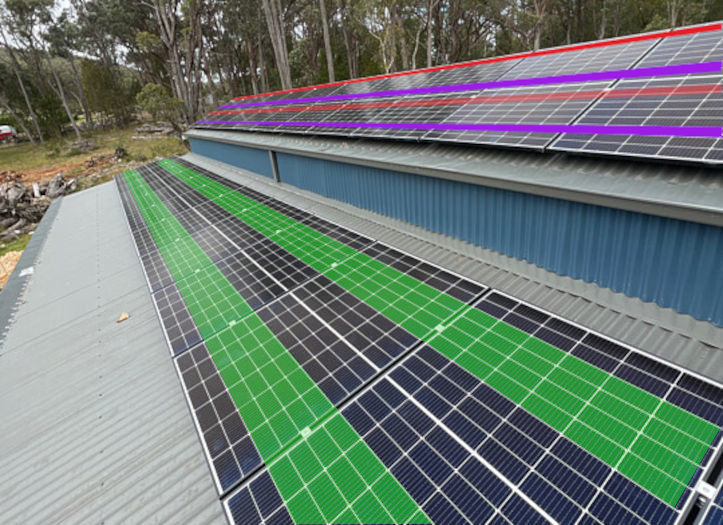
The bottom row shows compliant clamp zones in green. The top row has non-compliant clamps at the top edge, and the middle of the panel is shown in red. Solar panels should be moved down a little, and purple purlins installed.
You may get a single row of panels on a given plane, but have to waste a lot of space for the second row – if a second or third row is even possible. The best approach is to install extra purlin(s) so you have a structure to screw into, and also screw lines to walk on for less dents and safer foot traffic on the roof.
Or Go Landscape And Forget About Purlin Spacing.
Landscape solar panels are often leaps ahead. Racking going down the roof pitch means you have 70mm increments to play with instead of 900mm. They’re super strong, less prone to birds nesting and easier to clean out leaves.
However, 10 landscape panels on the shed roof above would require 20 earth connections between rails, and 40 feet for all that racking, which is pretty ridiculous.
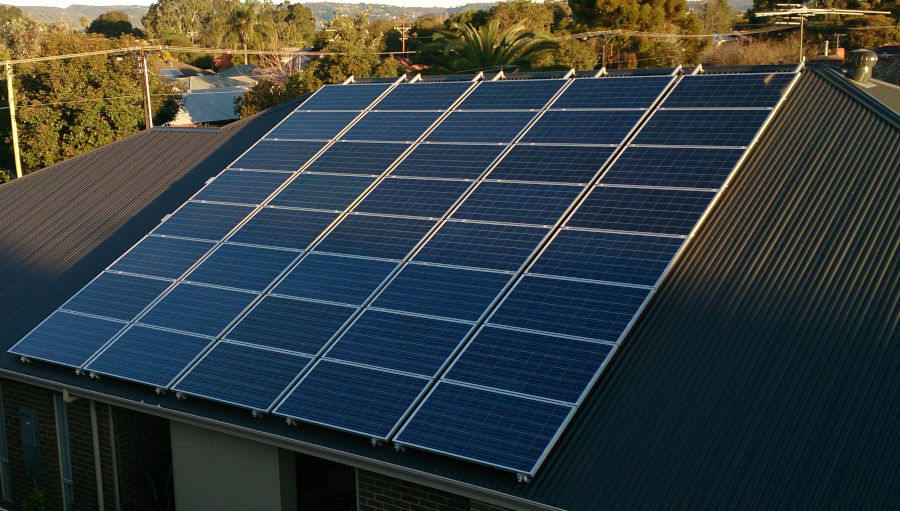
If only they were all this straightforward. Just make sure the bird perch is out of the way.
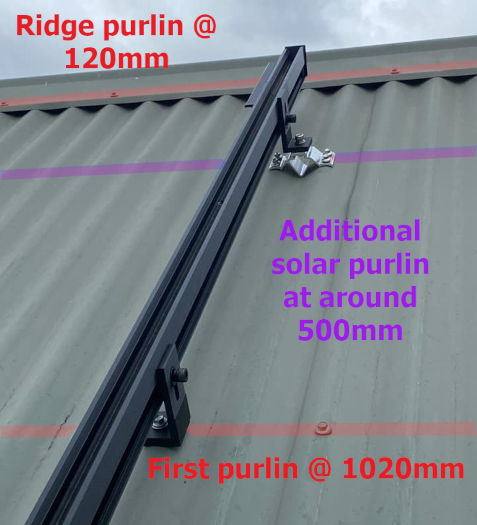
This installer has innovated (his landscape array) by using an s5! corrubracket to fix the rail directly to iron without having excessive & unsightly lengths sticking out to reach the ridge. Installing an extra purlin would be even better.
Landscape means lots more parts and cabling complexity, which takes extra time your installer may rightly want to charge for. Plus, extra rail is often used to reach the top or bottom purlin – it hangs outside the array, and some find this visually confronting.
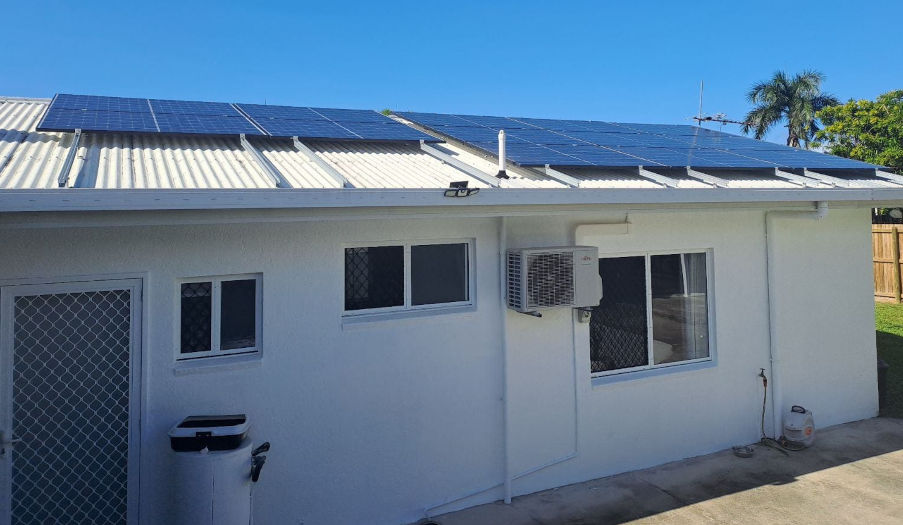
Landscape installs sometimes have a lot of exposed rails
How To Prewire For Solar, Batteries And EVs
There are two variations of adding solar power to a new build. One involves your builder offering a solar package with the advantage of a warranty on the house. Sadly, this can be a take-it-or-leave-it deal, an inflexible size and cheap equipment with a premium builders’ markup.
You could get better value with the builder simply installing AC wiring for an EV charger or solar and an EV and battery sub-board in the garage. Any sparky can run a big fat cable back to the main switchboard, but just be sure they calculate for 1% voltage drop.
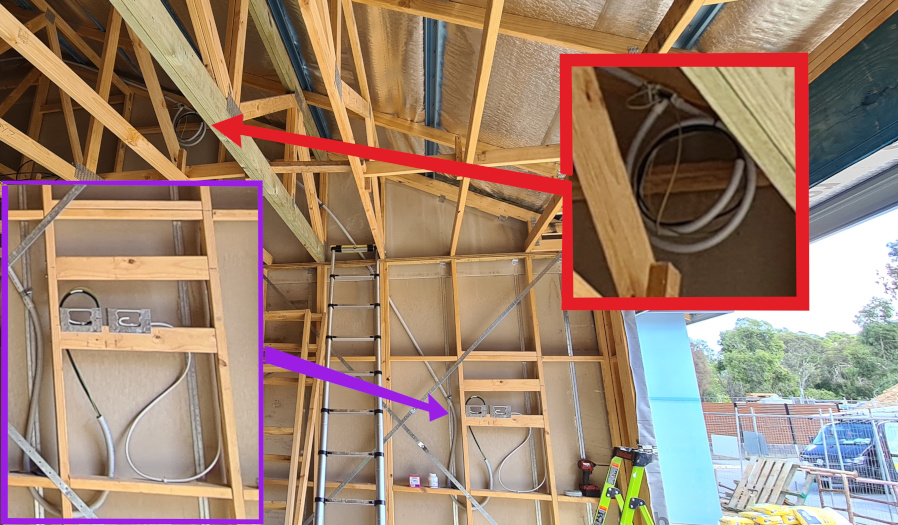
Loops of loose cable to pull out of the wall, secured so that the gyprockers can’t lose or damage them. Coil of cable in the roof space for one of two arrays.
The other option is installing solar a solar power system after handover, where your installer handles quality control (like any other install). However, because you don’t always get cooperation from the builder, it can be impossible to have conduits or AC cables built into the walls for a third-party solar company to use. This gets difficult for two-story builds in particular.
Installing Conduit Is A Killer
Unless you choose microinverters like Enphase, the solar panels on your roof need high-voltage DC cables in heavy-duty conduit. It’s there for mechanical protection and has to go in one continuous run from under the array to within 300mm of the inverter. There are no exceptions – even if you have a double brick cavity.
You may also need a wired data connection for the solar inverter or EV charger. And even if your device has Wi-Fi, wired is always the more reliable option.
What To Tell Your Builder About The Grid Connection
When your builder applies for a grid connection:
- Make it three-phase wherever possible. You’ll want that power to give you triple the capacity for solar and EV charging.
- Get a solar connection agreement and programmed retail meter from the outset. It will save you money.
10 Steps To A Better Build:
- Choose a cooperative builder.
- Set expectations with your builder about solar, insulation and energy efficiency as early as possible in planning.
- Engage a solar specialist as part of the plan.
- Aim for an all-electric house.
- Remember that hot water is a cheap battery for storing solar energy.
- Demand a clean, unobstructed roof
- Insist on a simple roof design.
- Ask the solar professional where extra purlins would help.
- Put the cable in to make your garage EV-friendly even if you don’t have an EV yet.
- Consider where the battery or future home battery will go, (but compliance can be difficult).
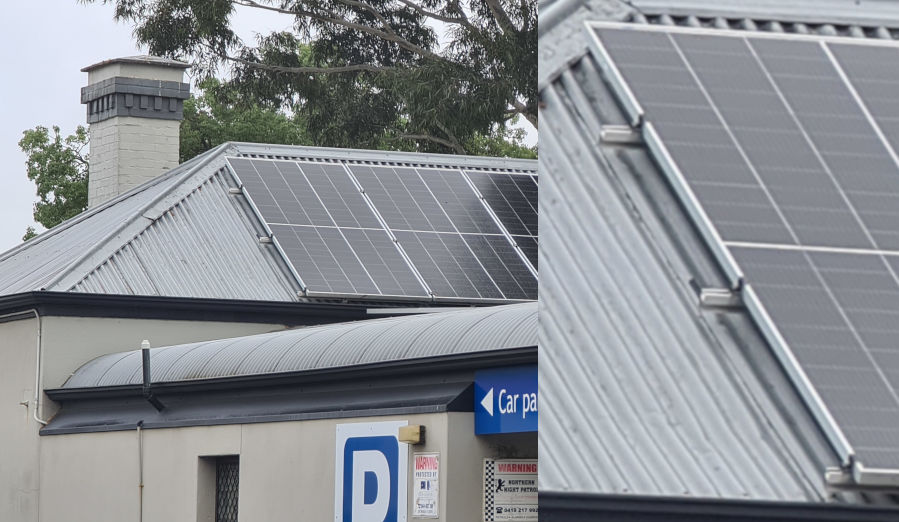
Clever use of monster commercial solar panels on a tiny cottage means the +2.2 metre tall modules cover three purlins and screw lines.
Don’t Regret Your Biggest Investment
Remember that the taps can be changed easily, but double-glazed windows are not easy to update. A simple, white roof is best, and putting insulation under it is a must. Ensure the winter sun will warm the living areas, not the laundry or the garage.
Building a new house can be as exciting as it is stressful, but making the right choices will weave comfort, efficiency and lower cost living right into its fabric. Thermal comfort is fundamental to enjoying your home, even more than how it looks from the road. So unless the Joneses want to pay your mortgage, forget about what they think and make the house work for you.
Original Source: https://www.solarquotes.com.au/blog/getting-solar-right-building/

